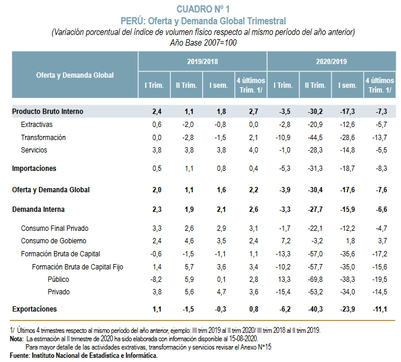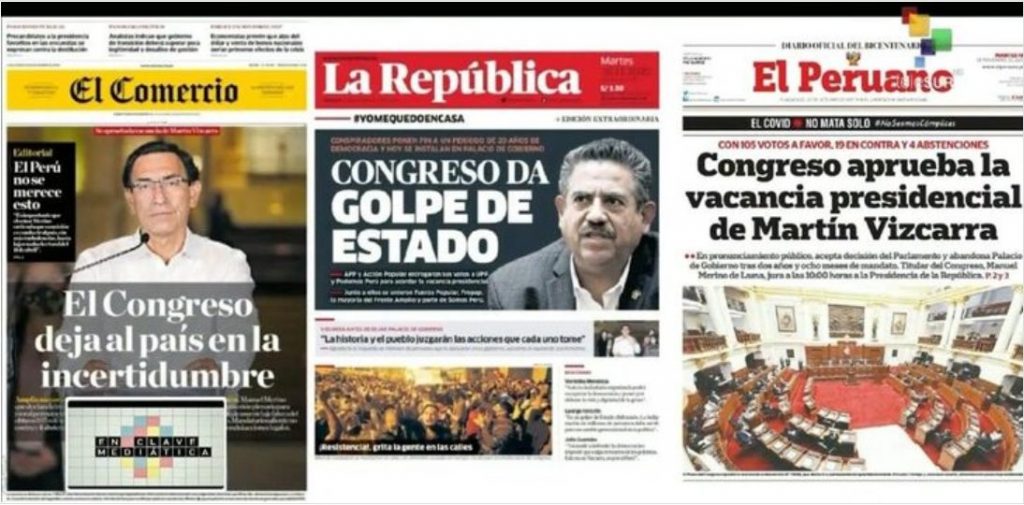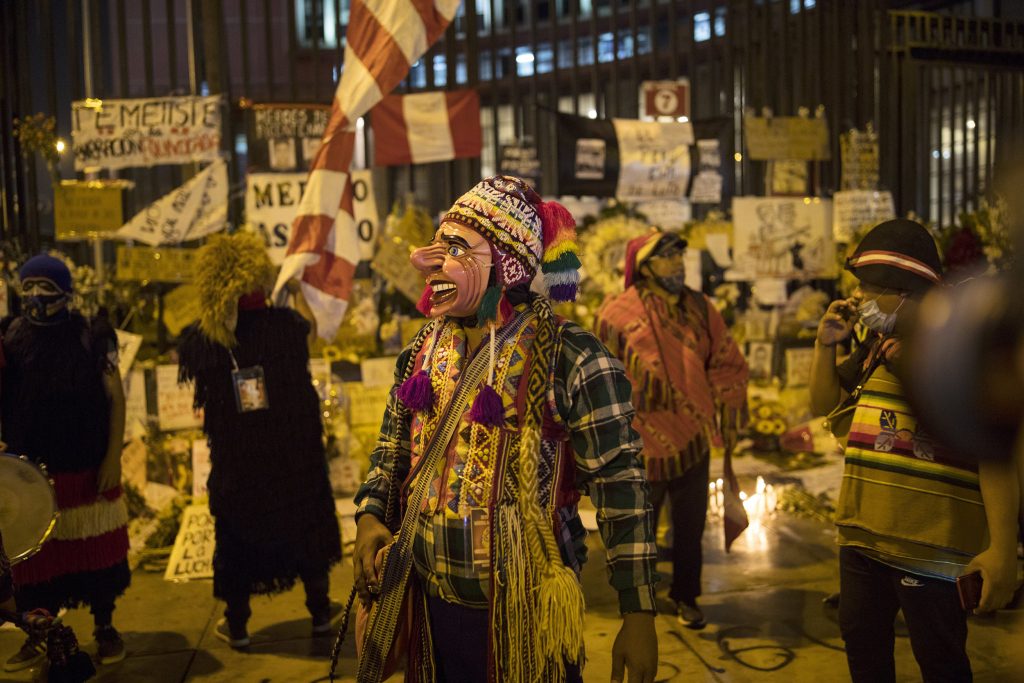
Performers visit a memorial where two people died during the Nov. 14 protests against the removal of President Martin Vizcarra, near Congress in Lima, Peru. (AP Photo/Rodrigo Abd)
DEAR FRIENDS. IF YOU LIKE THIS TYPE OF CONTENT, SUPPORT SOUTHFRONT WORK:
PayPal: southfront@internet.ru
Donation alerts: https://donationalerts.com/r/southfront
Gumroad: https://gumroad.com/southfront
Or via: http://southfront.org/donate/ or via: https://www.patreon.com/southfront,
BTC: 3Gbs4rjcVUtQd8p3CiFUCxPLZwRqurezRZ,
BCH ABC: qpf2cphc5dkuclkqur7lhj2yuqq9pk3hmukle77vhq,
ETH: 0x9f4cda013e354b8fc285bf4b9a60460cee7f7ea9
Submitted by Jhr Cronos
The wave of protests that is spreading today in Latin America is an evidence of global civil unrest. The lower class, youth, working people, the poor and the marginalized middle class are going out to the streets in Brazil, Chile, Guatemala etc.
Peru is not a big player in global geopolitics, but the current circumstances made it a trigger of the regional development tendencies. Peru has had 3 presidents in a week, 4 in four years… and counting. The population yells “All must go!”, the media yells “It was a coup!”, as the Congress swears that it is fighting corruption… What is actually happening in the country and what is going to happen? Analyzing the Peruvian way can be the key to understanding the entire region.
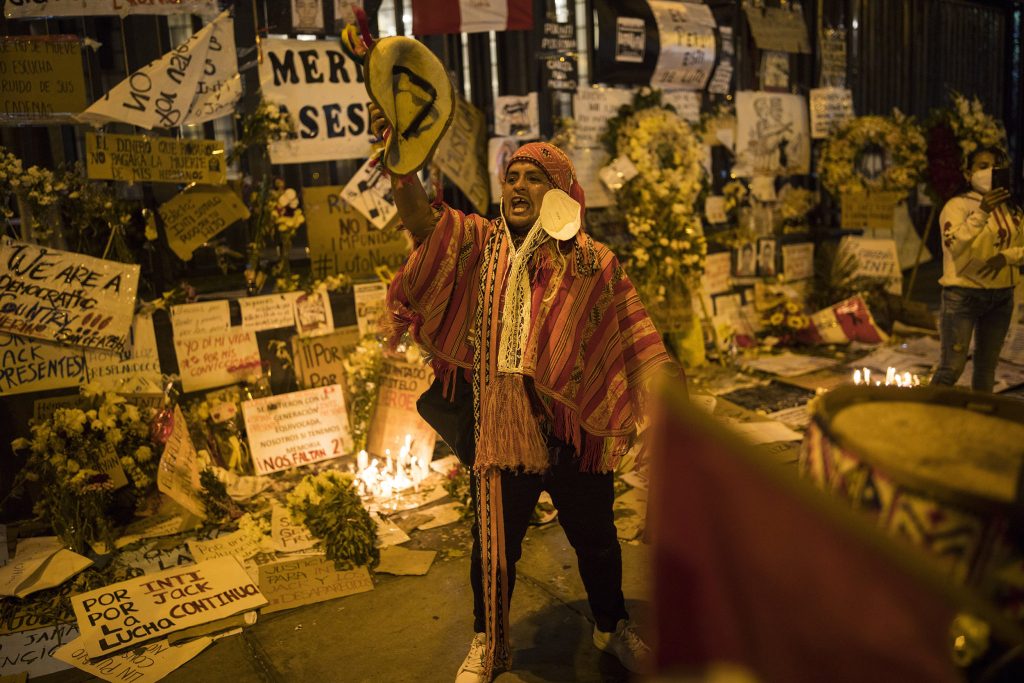
Performers visit a memorial where two people died during the Nov. 14 protests against the removal of President Martin Vizcarra, near Congress in Lima, Peru, (AP Photo/Rodrigo Abd)
On the self-destruction of the government:
The destruction of the government, and not only of the executive branch or Congress, was the multi-year process. A few years ago, during the elections in 2016, the options for Peruvians consisted of the white-collar thieves and more common ones. (LINK) There was not much difference, as the two parties argued of the political rights and their corrupted leaders. Thus, a suggested solution that prevailed at the second electoral round was quite obvious: the Congress was given to one party, and the presidency to another.
Former President Pedro Pablo Kuscynski (also called PPK) blackmailed Congress several times threatening to dissolve it, in case the Minister’s appointments and government plans were not approved, while Congress threatened to vacate him. The population supported PPK (the Peruvians traditionally support the president in such cases, starting with former President Fujimori and ending with now former President Vizcarra), but slowly there have been records Congress accumulated against him. Finally a vacancy process was opened, which he won! But PKK committed a significant mistake, which was to negotiate with Fuerza Popular (the political party of former President Fujimori, now controlled by his daughter Keiko) a pardon for former President Fujimori, who had a long prison sentence for the participation in murders and massacres, among other crimes. This is the way PKK lost all popular support. Shortly after, he faced another vacancy process. One morning he resigned before Congress kicked him out that very afternoon. Today he is on trial on corruption charges.
Then Vice-president Martín Vizcarra, a low profile politician who had been president of the Moquegua Department, took office. He arrived with courage and won over most of the population. He soon approached the Fujimori majority in Congress, which had previously been discredited, and following the trend of his predecessor, threatened several times to dissolve the Congress… until he finally did it. This dissolution was unconstitutional. (LINK) However, elections were called and a new Congress was elected. Was it convenient for Vizcarra to dissolve that Congress? If he wanted to try to rule, yes. But one thing is to try and another is to succeed. From the very beginning, he did not have a great probability of success, not even having a party to run in those elections. His party was that of PPK, which depended completely on PKK’s figure. As PKK fell and was tried for corruption, the party just disappeared into smoke. Fujimori’s party suffered a debacle in the elections, but Vizcarra’s allies also did not rise that much. Congress was divided into several minor parties, none of which had a minimal majority. Each group began its battle to advance and gain influence and support from the others. For Vizcarra and the executive branch, it was too difficult to reconcile support among so many groups, or to buy them. Their main support, the Partido Morado, did not have (and does not have) strength. Soon after, the struggle between the president and Congress resumed.
Why did Congress decide to vacate the president, with only half a year left before the elections?
Frankly speaking, there was no reason for the persecution that the new Congress carried out against Vizcarra. Both the Congress and presidency support right-wing economic ideas. They also worked together against the “fujimoristas”.
There were 3 attempts to vacate Vizcarra. The first attempt was made by the previous Congress, which defended itself against the threat of dissolution. The second was rather a melodramatic novel, which mentioned Vizcarra’s sexual affairs during his government in Moquegua. The third attempt came with accusations of receiving payments to benefit a company with contracts, also during his regional presidency.
So… did Congress just want to fight corruption? No way. As the now-former president said in his defense speech, 68 of those same congressmen have open judicial investigations in court. The reality is that they were preparing themselves for the electoral campaign.
Politically, no opposition party has benefited from helping Vizcarra. Only Acción Popular (party with majority of seats in the actual Congress) and Partido Morado could hope to inherit Vizcarra’s votes. But Acción Popular wanted to distance itself from the government, which would bear the blame for the economic crisis (a 40% drop in GDP in the second quarter, and it is expected to fall in the third and fourth quarters as well) and for the crisis of the health system during the coronavirus pandemic; and since, vacating Vizcarra would literally put the control over the country (and over the upcoming elections) in their hands, they took that route. In absent of a vice president, in case of presidential vacancy, the presidency goes to the Congress Chairman, and that was the chance for Acción Popular. Also, the Mayor of Lima, who has the greatest economic weight and a third of the voters, is from that same party. Now, with such a power they were not going to carry out any government plans, they didn’t have time with the coming elections. But they would control the checks.
If former President Vizcarra and the Congress main parties have the same economic and political right wing preferences, so why did the Peruvian corporate media react fervently defending the last presidency?
A fact is worth more than a million words, and this author sticks to the facts. What ghost scares the Peruvian establishment? What makes their legs shake? Well, his natural enemy, the people! What has recently happened in Bolivia? The victory of the Movimiento al Socialismo, the party of socialist Evo Morales. In Chile, the bastion of the economic right in South America, the government was forced by its population to bury its Constitution and make a new one, from the very first letter. Trump falls, Bolsonaro has 167 thousand deaths due to the pandemic he always denied, Maduro is still in Venezuela… and in Peru the demands to change the Constitution are louder and louder, promoted by few left parties that exist. One of them even has several congressmen and was the third in the last presidential elections.
At the time of his fall, Martín Vizcarra had high support of the population. He represented stability, also guaranteed a quiet election and huge financial aid for big business groups, aid that the small parties now in control of the country will not give because of their political campaign and cannot give because of their capabilities. And whoever even tries will lose the election.
Therefore, the mass media were alarmed and shouted about the coup. However, when there was a real coup with the dissolution of the previous Congress, they remained silent. Large media were actively sending their commentators to promote the idea.
Finally, was there the coup? No. The Constitution is clear about this, and it seems that the media reporters have not read the Constitution. So if they shout; it is not because of their ignorance. They wanted to try, in a mad rush, to get Vizcarra back. They sold the idea that the protesters’ cry was asking for Vizcarra’s return, when in reality it was “everyone must go”.
Final Results:
The media tantrum did not last long. Soon, they realized that a reversal was impossible and proceeded to look for a stable option. Acción Popular, who led Congress, inherited the presidency with Congress Chairman Manuel Merino, who had come to office with 5,000 votes from the Department of Tumbes in the extreme north of the country. It did not help. The protests continued, and the violence increased on the streets, there were two deaths, dozens of wounded and even kidnapped. The Congress had to find a consensual way out. Manuel Merino would resign, would bear responsibility for the deaths (he will not be judicially bothered for the issue, anyway), and they would look for someone as clean as possible to assume presidency… and do absolutely nothing more than to lead the country to new elections.
The first choice for “as clean as possible” was a left-wing congresswoman Rocío Silva Santisteban from the Frente Amplio (which is the only self-proclaimed left-wing party in the Peruvian Congress), a poet, journalist and social activist who supposedly had the consensus of the congressional groups. The vote seemed just a formality, but a counter-order came at some point and she was rejected. The rejection surprised almost all journalists covering the event. The establishment was not desperate enough to accept the leftist woman.
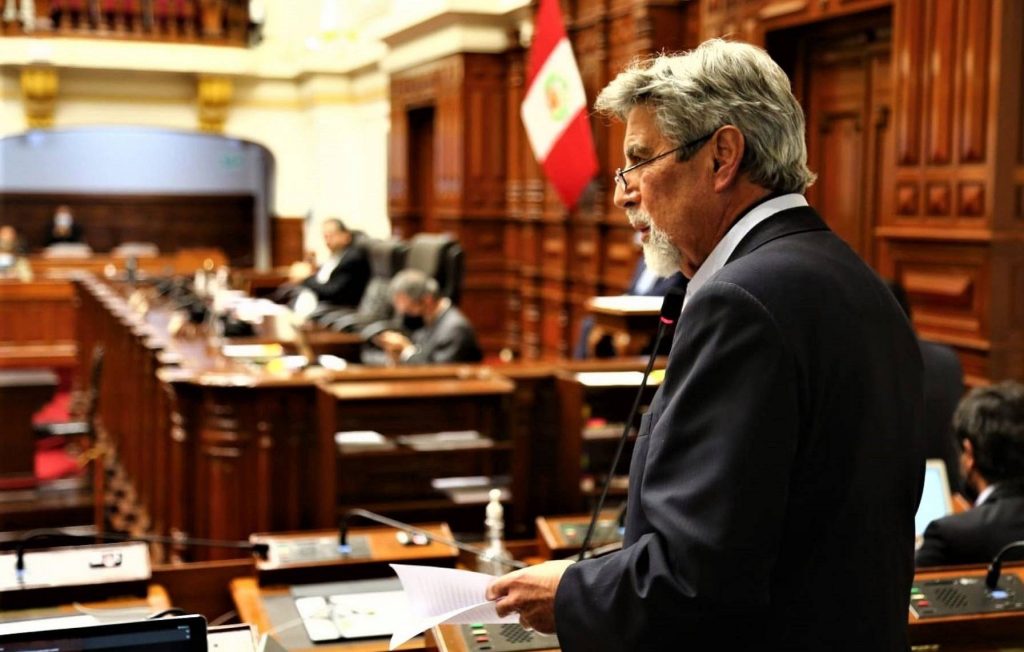
A handout photo made available by the Andean Agency shows legislator Francisco Sagasti, from the Morado Party, with a center-liberal tendency EPA / Agencia Andina
We are almost at the end, with Peruvian politics biting its tail. Francisco Sagasti, from the Partido Morado is the new president of Peru, for now. A well-studied man, disciple of the United States universities, closely linked to international banking and very efficient in his affairs, who has Peruvian and Costa Rican citizenship. He worked with the military government in the 70s, also in the first and second presidential periods of late Alan García (suicide the day he was going to be arrested because of corruption trials), a little during Humala presidency (also on corruption trials), and even with former Lima Mayor Susana Villarán (house arrest, more corruption trials). As you can see, he does not feel disgust at any political party that leaves him working as he wishes. He was elected Congress Chairman and shortly after, the President of the Republic. For the groups in power, he is a guarantee that there will be no experiment or change in the country’s economic policy, at least until another president is elected. Nor will foreign policy change and will remain well aligned with Washington. Nor are monetary problems expected (although the currency has slowly lost value in these months, due to the pandemic), because there will be access to international credit if necessary.
In short, he is another Pedro Pablo Kuczynski.
Predictions:
Firstly, both the government and the mass media will do everything possible to silence and dissolve the protests, especially the demands of a new Constitution. The groups that continue to press, taking the example of Chile, will be named as “terrucos” (derogatory word for leftist protesters, relating them to terrorists), who seek to turn Peru into “a new Venezuela”. Then, any violent protest will be linked to the two parties of the supposed left, Frente Amplio and Juntos por el Perú (the second contains one of the largest communist parties in the country, Patria Roja). Normally all the parties would disengage from any form of violence, but with the successful example of Chile, perhaps, some will dare to take the movement for them.
The protests, which have almost calmed down, will probably resurface sporadically during electoral campaign the next year. They will likely focus on calling for a new Constitution.
It seems that the atomization of political groups will continue. Acción Popular, today the best-positioned party in the country, will have the straight lane for the campaign, and will not lack resources with the tacit support of the government and the media. The Purple Party will have an easy campaign, but it is not expected to come out of the shadows. Another electoral debacle waits for Fujimori’s party. The new religious party, FREPAP, will continue to rise in votes, although probably not enough to win the top scores. The nationalists will see their votes stalled. The two leftist parties will try to negotiate a common candidacy… doubtful, but not impossible. No party seems to come close to winning in the first round.



